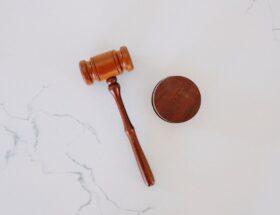Admit it! Nobody likes to see filthy rust stains in toilet bowls, tubs, sinks, and shower stalls. It makes your place very unattractive. Thus, to keep the stains at bay, one must clean them regularly with the right cleaning products. Believe it or not, all-purpose bathroom cleaners or chlorine bleach can add no effect or can make your situation worse.
Acid-based products are most likely to remove rust stains. The acids can be mild, like citric acid products, acetic acid, or tartaric acid. Acidic features of the citric acid products react with the rust and loosen its bond from the surface. Thus, it is highly recommended to buy citric acid in bulk for using it in multiple ways at home.
What causes the growth of rust stains?
When the metal surfaces are left uncoated, a reaction occurs between iron with oxygen, and rust appears. Thus, the rust stains left on the edge of the sink may have been left by a razor blade or shaving cream can. However, the rust stains near the sink, drain, and toilet bowl is caused by water with high content of iron particulates or untreated metal components in the tanks, plumbing pipes, or water heaters.
How often must one clean rust stains?
One must pay attention to the tough spots that are most likely prone to rust stains at least once every week. If you are more cleanliness freak and want a spik and span bathroom, then you must thoroughly dry the sink, tub, and shower area after every use. It enables the rust particles in the water to settle onto the surface.
Basic instructions to clean the rust stains
There are many ways to clean the rust stains from the bathroom tubs, sinks, and toilet area. Before we begin with the instructions, one must keep the following tools handy:
- Scrub brush
- Old toothbrush
- Toilet bowl brush
- Spray bottle
- Microfiber cloth
Use the power of citric acid products
Citric acid is bought online or from the local grocery or drug stores and is used immediately to see the difference. To use the citric acid powder, one must make it into a paste by adding a few drops of water. Once the citric acid paste is in the right consistency, apply it to the stained area.
Leave the paste on for a few minutes, then scrub it using a scrub brush or an old toothbrush. It will remove all the stains from the surface and give you a clean and shiny bathroom tub, sink, and toilet area.
Use Of Cream Of Tartar
Surprising right? The cream of tartar is useful in many ways other than in baking. One can use the powdered cream of tartar and sprinkle it over the rusted areas like sinks or tubs. After that, scrub it with a dampened nylon bristle brush. However, for cleaning the shower walls or toilet area, one must make a paste of cream of tartar. Leave it for some time while covering it with plastic wrap.
#5 Tips to prevent the rust from settling in tubs, sinks, and toilet area
- One can install a water filtration system or water softening system to prevent stains in the bathroom from iron-rich hard water.
- Any can or container with a metal ring on the bottom can instantly leave rust on the sink after coming in contact with the moisture. Thus, it is advised to place any such content in a cabinet that is a little distant from the bathroom area and sink.
- It is highly recommended to wipe the bathroom area and the sink with citric acid products after every use to leave no scope of rusting.
- If you find any plumbing issue, you must instantly fix it. Cause imagine, if you leave this task for later, then every single drip from the faucet is building rust stains in that area.
- Additionally, it would help if you inspected the interiors of the toilet tank. If it is an old one, the chance of corroded and rusty metal components is quite high. People who don’t want the above situation to happen after now and then should replace the components with non-corrosive PVC components.










